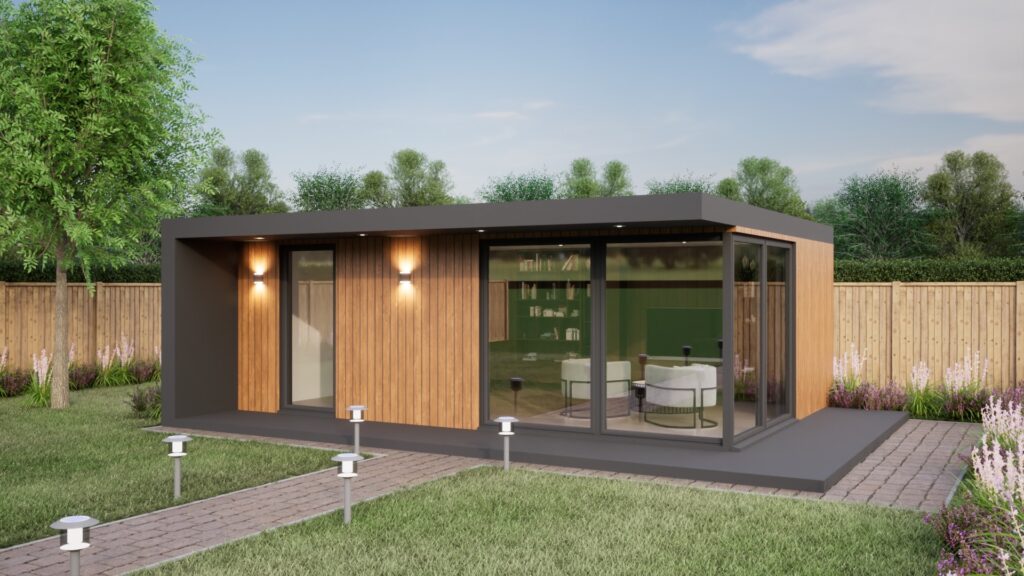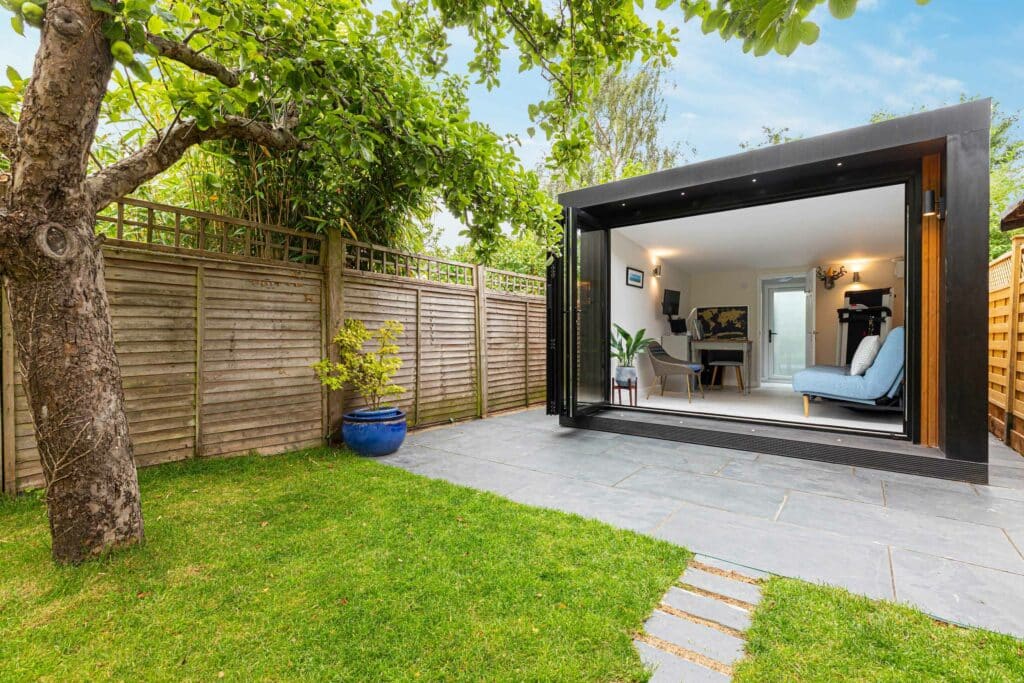Free Info For Planning Permission For Garden Sheds
Free Info For Planning Permission For Garden Sheds
Blog Article
What Type Of Planning Permission Are You Required To Obtain In Order To Change The Purpose Of Your Garden, Etc.?
If you are building conservatories, garden rooms, outhouses, or garden offices and extensions and extensions, the "change of use" concept is essential in determining whether a planning permit is required. These are the primary considerations for a planning permit related to the change of use changing from non-residential to residential
You'll need planning permission for converting a nonresidential structure like a garage or agricultural building to a home office or residential space. This is due to an alteration in the usage class of the building.
Garden Rooms: Living Area
A change of use is the case when a garden room is utilized as an independent dwelling (e.g. a guesthouse or rental unit). In order to ensure that the building is in compliance with residential regulations and standards the planning permit is required.
Utilization of Business
If you are planning to use the garden room or conservatory for business purposes (e.g., as an office for the home-based business with frequent guests or employees) the planning permission might be needed. This is because of the potential impacts on neighboring areas such as noise, parking and traffic.
For Community or Educational Use
In order to transform an existing garden building into a place for learning or community activities (such as classrooms or meeting rooms) Additionally, you'll require planning permission. The local authority assesses the location's suitability and its impact on surrounding areas.
Local infrastructure impacts:
Any modification to the use of which will have a significant impact on the infrastructure of the area (e.g. roads, drainage systems and public services.) is likely to need planning approval. In the planning process the local authority must evaluate the impact of these changes.
Dual Use:
Planning permission can be needed to clearly define and control the various uses of the property.
Increased Footfall and Traffic:
Planning permission might be needed when the proposed change is likely to increase the amount of foot traffic (e.g. the conversion of a small garden room into retail space). This is in order to minimize any potential negative impact on the locality.
Building Regulations Conformity:
It is important to note that although a change of usage does not require the approval of a permit for planning, it must remain in line with all building codes and regulations. These are necessary for the safety of people and their health, as well as for energy efficiency. This is essential in the process of converting spaces into habitable ones.
Environmental Impact:
Changes in the use of land that may have an impact on the environment, for instance as the conversion of agricultural land into a residential area, will need permission for planning. A environmental assessment could be required in an application.
Community and Amenity Effect
A crucial aspect to consider is how these changes could impact amenities for the community as well as the area's character. To ensure that the proposed project is in line with community plans, and local amenities are preserved, converting a garden space into a cafe will require approval from the planning department.
Designated Areas
In designated areas like conservation zones, National Parks, or Areas of Outstanding Natural Beauty (AONB) Changes in use are subject to stricter restrictions to protect the character and beauty of the place. Planning permission is necessary in these situations.
Local Planning Policies
Local planning authorities have guidelines that differ in terms of how they deal with changes in usage. Review these policies to determine what modifications require approval and the criteria that must be met.
In short the typical planning permit is required for any significant change of use of a garden space, conservatory outhouse, garden office or extension. This will ensure that the new use is appropriate for the area and complies to local and national policy on planning. Additionally, it will address any possible impacts on the community and environment. It is essential to discuss with your local authority about planning at an early stage in the process to determine the specific needs and obtain the necessary approvals. Have a look at the top insulation stevenage for more tips including garden room planning permission, garden rooms near me, Tring garden rooms, outhouses, garden rooms near me, herts garden rooms, outhouse uk, do i need planning permission for a garden room with toilet, what size garden room without planning permission, garden office hertfordshire and more.
What Planning Permissions Is Required To Build Garden Rooms, Etc. Regards To Neighbourhood Concerns?
The concerns of the neighbors are a key element in determining whether or not planning permission will be needed to construct a garden room or conservatory, an outhouse, garden office or extension. Here are the key aspects to consider privacy and overlooking:
Planning permission might be required if the new construction could cause a loss of privacy. The new structure should not adversely affect residents' living arrangements.
Overshadowing and Loss of Light:
Planning permission might be required when a building project is likely to cause shadowing of neighbouring homes or a significant reduction in lighting. The local authority for planning will consider the impact on sunlight and daylight to adjacent houses.
Disturbance and Noise
It is necessary to obtain planning permission in the event that the garden area will be used to generate noise, for example, an office at home where clients can come in the workshop, or a music room. The noise levels should be within a reasonable range and should not disturb neighbors.
Visual Impact and Character
The appearance, design and the size of the new structure should be consistent with the neighborhood's character. Planning approval ensures that the development is pleasing to the eye and doesn't interfere with the aesthetics of the neighborhood.
Boundary Proximity
Buildings that are built within two metres of a boundary or structures higher than 2.5 metres may require approval for planning. This is in order to prevent disputes and impacts on neighboring properties.
Shared Access Rights of Way and Rights of Way
If the construction affects rights of access or shared access points Planning permission is required to ensure that they aren't obstructed or affected.
Oppositions from Neighbors
Neighboring residents have the right to be consulted on plans. The planning authority will weigh the views of neighbors when deciding whether or not approval is granted.
Effect on property value:
While it's not always the primary aspect, any major changes to the surrounding homes that could affect the value of their properties could be a factor in determining the necessity of a permit. When making a decision, the local authority will examine the effects.
Covenants and Deed Restrictions
There could be deed restrictions or covenants on the property which require compliance, regardless of planning permission. These agreements could affect neighborhood harmony by dictating the type of building that can be constructed and what can't.
Construction Disturbance:
Planning permission may be granted in order to resolve concerns over disruptions that may occur during construction, such as dust, traffic and noise. You may have to set conditions that benefit your neighbors.
Infrastructure Impact
The planning approval ensures that any further impact on the infrastructure of the area is evaluated and addressed.
Community Consultation
In some instances there are times when a greater community-based consultation may be necessary particularly when it comes to large or controversial development plans. This process allows for a more democratic and inclusive decision-making.
Summary Neighborhood concerns are a key factor in the approval process of garden rooms, conservatories or outhouses. To prevent a negative impact on the living conditions, privacy and lighting levels within the neighborhood, it is vital that any proposed expansion doesn't adversely affect the neighborhood. Talking with the local planning authority and engaging with neighbors early during the process of planning can aid in addressing these concerns and ease the approval process. Follow the top rated how to install decking on grass for more advice including costco garden room, garden outhouses, garden rooms near me, costco garden room, outhouse garden rooms, garden room permitted development, conservatories and garden rooms, garden room permitted development, garden outhouse, best heater for log cabin and more.
What Planning Permission Do You Need For Your Garden Areas, Etc. In Terms Of Appearance And Design?
Do you plan to build a garden office, conservatories or outhouses? The style and design of the building will play a major role in determining if planning permission is necessary. Here are some important things to think about:
If your proposed building is within the permissible development rights for your property, a planning permit may not be necessary. There are however specific design and look requirements that must be met.
Dimension and scale:
The size of the new structure must be proportional to its surroundings and the existing structures. Buildings that are bigger than the limits set out in permitted development rights require approval for planning.
Height and Massing
The height and massing of the new structure should be consistent with the size of the property as well as surrounding structures. Planning permits are often needed for buildings that go over the height limits or are incompatible to the surrounding area.
Materials and Finishes
The materials used and the finishing should be in harmony with the current building and structures. It could be necessary to obtain planning permission if materials are not compatible with the character and design of the space.
Design Harmony
The style and design of the building must reflect the style and architecture of the existing structure. The design of the structure to be constructed must be in harmony with local characteristics and appearance.
Roof Design
The design of the roof must match the architectural style of the existing building and the surrounding structures. If the proposed design of the roof is not in character with the surrounding area, planning permission may be needed.
Fenestration is a term used to describe windows and doors.
The design, placement and size of the windows and doors must be in harmony with the existing structure and the surrounding structures. If the proposed fenestration is not match the local appearance or character it is possible that planning permission will be required.
Facade Treatment
The way the facade is treated should be in harmony with the existing property and surrounding buildings. If the proposed treatment of the facade is not in keeping with the local character or style the approval of the planning department may be required.
Landscaping and Surroundings
The landscaping should be in harmony with existing structures and properties. If the landscaping proposed is out of character in the surrounding area, planning permission may be needed.
Visual Impact:
The impact of the new structure's visual impact on the surrounding area should be limited. A planning permit could be required for a building that is a negative impact on the area.
Heritage and Conservation Areas:
If the property is within a conservation or heritage zone, more stringent design and appearance criteria may be in place. For new constructions that do not conform to the above standards an application for planning permission may be required.
Architectural and Planning Guidelines:
Local planning authorities typically issue guidelines for aesthetics and design. Planning permission may be required if the proposed structure does not comply with these guidelines.
The design and appearance is often what determines whether planning permission is granted for conservatories or gardens. It is essential to consult in advance with local authority to decide whether or not planning permission is required and to ensure that the design fits with the local character guidelines. Follow the best garden room extension planning permission for blog advice including garden room vs extension, outhouse buildings, garden outhouses, costco garden office, garden room heater, garden rooms near me, insulated garden rooms, costco outhouse, what size garden room without planning permission, composite summer house and more.